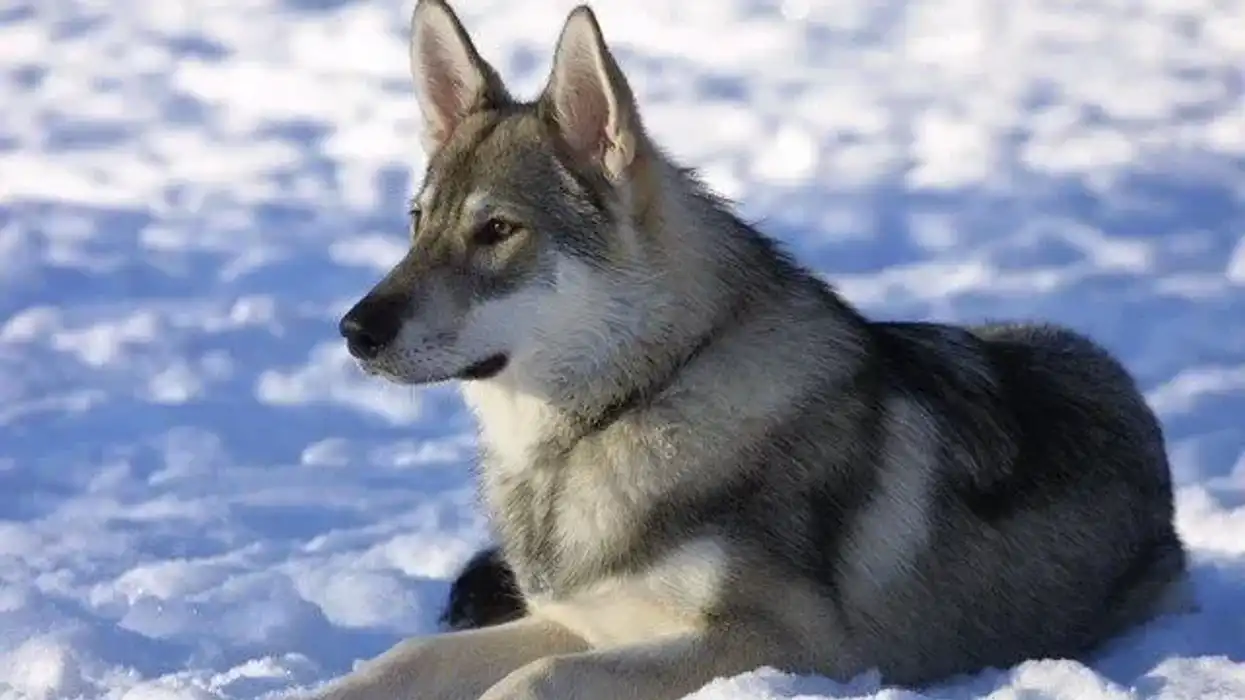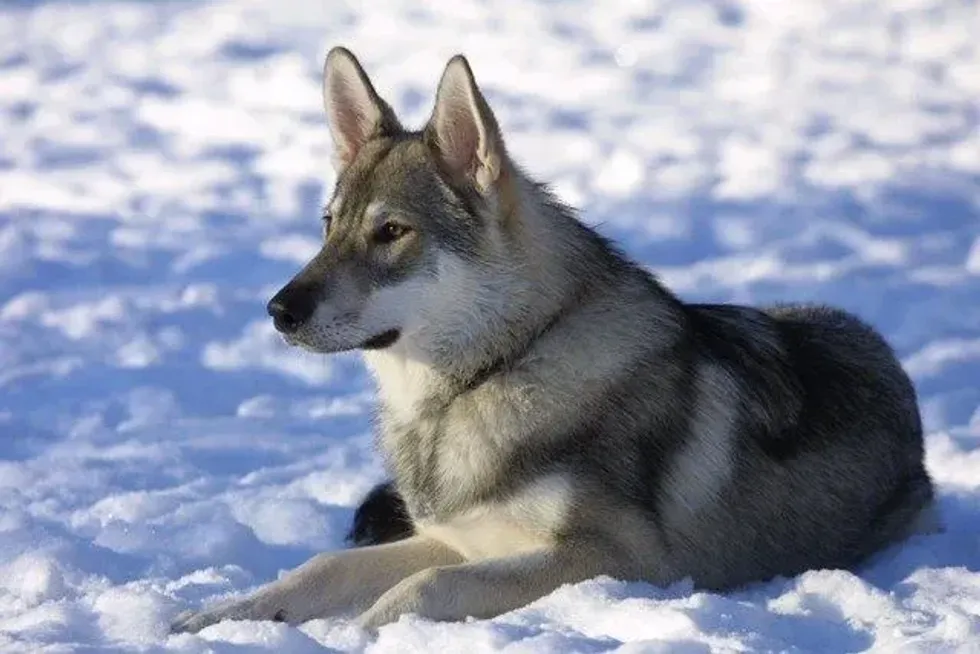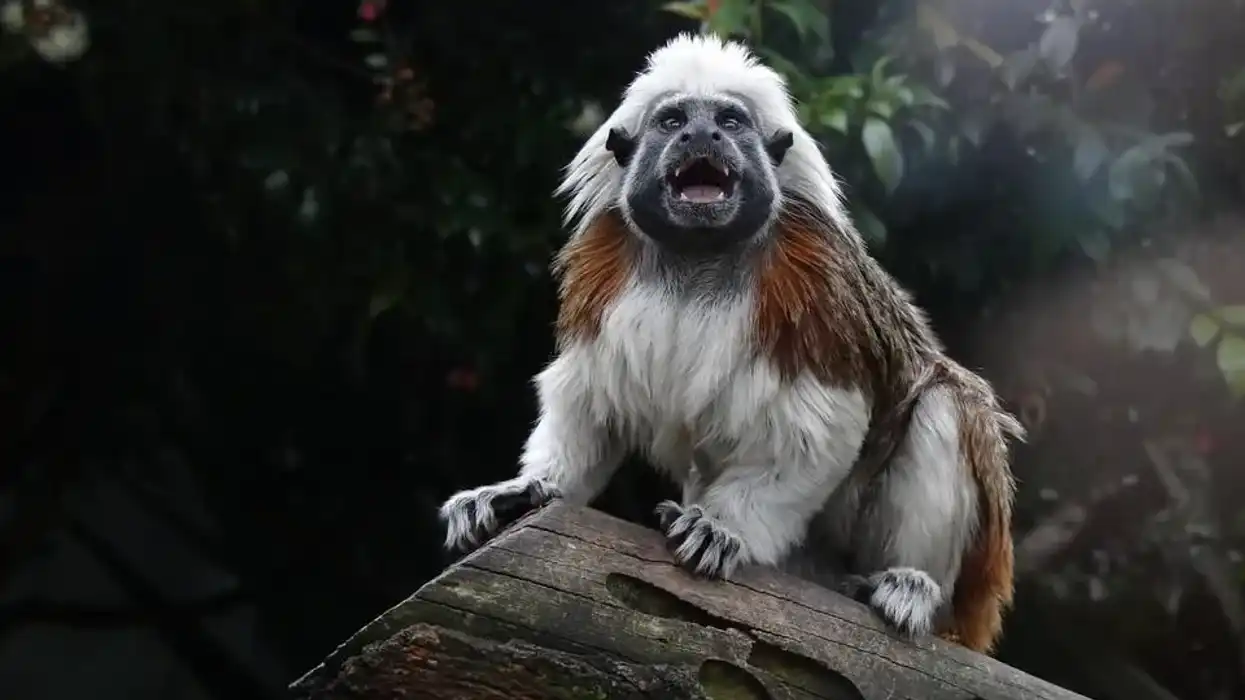Fun Tamaskan Facts For Kids

Have you ever heard about a designer dog, wild and fierce in appearance like that of a wolf, and yet calm, familial, and absolutely fit to be your friend ? Well, Tamaskan dog is one of them.
Except for the wolf-like appearance, a Tamaskan dog breed is nothing like a wolf and these dogs are actually considered to be a mixed breed of debated ancestry as Husky, Malamute and German Shepherd dog are parts of the same dog breed.
Tamaskan dogs make a great fit for family dogs due to their calm nature and intense loyalty towards humans. They are easy to train and with proper training, will protect their humans like a wolf.
They should not be left alone because of their likelihood of suffering from separation anxiety wherein they can become destructive, and Tamaskan dogs usually prefer a fellow dog wherever they are housed. Though they are a little stubborn, they are easy to train with help of positive reinforcement.
A Tamaskan is a working dog and has regular exercise requirements to stave clear of various health problems. Being a rare breed, they are mainly focused in and around the US only.
When it comes to Tamaskan size or Tamaskan weight, it can vary slightly depending on the age, health status, and activity level of a particular dog. Read on for Tamaskan dog facts and check out our articles on Kunming wolfdog and Australian retriever breeds as well.
Tamaskan Interesting Facts
What type of animal is a Tamaskan?
Tamaskan is a new dog breed with a wolf-like appearance known to have mixed origins namely, Alaskan Malamutes, German Shepherds, Siberian Huskies, and possibly Samoyeds.
The perks associated with a Tamaskan dog are that except for looking like a wolf, they have nothing similar to wolves and are extensively loyal, friendly, and gentle animals to be housed as a pet dog.
They can also be trained for various tasks by experienced pet parents and love to be around other canine companions.
What class of animal does a Tamaskan belong to?
Tamaskan dogs, known as a mixed breed of unknown ancestry of dogs, belong to the mammal class with a wolf-like appearance and characteristics of a domestic dog. Like all other dogs, the female Tamaskan dog gives birth to around 6-10 Tamaskan puppies after a gestation period of up to 70 days.
How many Tamaskans are there in the world?
There are no accurate estimates of the total number of Tamaskans in the world as there is no official Tamaskan dog register. Tamaskan dogs are considered a rare species and most of the Tamaskan dogs are found in and around the US only.
They do not face an extinction threat as the breed is a hybrid breed and there are professional breeders engaged in rearing Tamaskan puppies in the US.
Where does a Tamaskan live?
Tamaskan dogs are termed as extremely friendly and loyal beasts which make them a perfect fit to be housed as a companion dog.
They display a highly loving behavior towards humans and love to be around other canine companions in the same house as well. Tamaskan dogs can also become highly depressed if left alone for long periods, and usually face separation anxiety.
Hence, they require proper training, complete assistance, extra care, and regular exercise to boost their physical and mental health as they tend to be bored and lethargic if left alone.
What is a Tamaskan's habitat?
Tamaskan dogs prefer to live in cold conditions and thrive in open spaces. They are extremely familial and loyal beasts which make them perfect to be housed as a pet dog.
The exquisitely familiar nature of a Tamaskan dog towards humans prevents it from being efficient as a watchdog. Confined areas are not suitable for a Tamaskan puppy or an adult Tamaskan dog, as they love to play around and have special exercise needs.
Who do Tamaskans live with?
Tamaskan dogs, epitomes of calmness, friendliness, and loyalty, live with humans as a companion dog and like to live in a house with other pets. As a Tamaskan dog is a working dog, they require proper training and regular exercise to enjoy good health and live for longer periods.
They are highly intelligent working dogs who can complete most of the tasks as required by their humans.
How long does a Tamaskan live?
Tamaskan wolf dog is considered to be one of the most healthy and athletic breeds.
Tamaskan dogs have a life expectancy ranging from 14-15 years which can be increased with proper grooming, training, and exercise.
Tamaskans are meant to be trained as leaders and love to work. A Tamaskan dog needs regular exercise in form of a walk or a jog for good physical and mental health as they can grow bored and lethargic if confined indoors for long periods.
With proper grooming in the form of brushing and combing the coat every alternate day, trimming the nails, cleaning ear wax, and regular brushing of teeth to avoid dental problems, Tamaskan dogs can have a long and promising life expectancy.
How do they reproduce?
Like all other dogs, Tamaskan husky dogs reproduce through the process of mating. After the mating process is complete, the female will give birth to an average litter size of 6-10 puppies.
What is their conservation status?
Tamaskan dogs are known to be from a rare species of Northern Inuit dogs mostly kept as companion dogs in houses. The breed does not face any potential threats as of now to its existence.
Tamaskan Fun Facts
What do Tamaskans look like?
Tamaskan dogs are large, athletic beasts with the appearance of gray timberwolves. They are taller in size than German Shepherds, larger than their Siberian Husky ancestors but smaller than the Alaskan Malamute.
You can find different varieties of Tamaskan dogs such as wolf gray Tamaskan, red Tamaskan, white Tamaskan, black Tamaskan, white elk Tamaskan, and several other colors.
The color of the eyes can vary between yellow, brown, or amber.
They have a straight bushy tail and a thick double coat. A male Tamaskan dog usually measures around 25-28 in tall at the shoulder and typically weighs between 66-99 lb, while the females are slightly smaller than the males with a height of 24-27 in and weigh around 50-84 lb.

How cute are they?
The details of their wolf-like appearance but sweet nature are clear evidence of how cute a Tamaskan dog can be. The Tamaskan puppies are absolutely cute creatures besides being gentle and familiar to humans which makes a Tamaskan dog a perfect fit for human companionship.
How do they communicate?
Tamaskans are highly social animals and love to communicate with humans and fellow canine groups. A Tamaskan dog uses the common auditory methods for communication, like whines, howls, barks, whimpers, and so on.
How big is a Tamaskan?
Tamaskans, being large and athletic, are slightly taller in size than German Shepherds. They are substantially larger than their Siberian Husky ancestors but smaller than the Alaskan Malamute.
As per the Tamaskan dog register, a male Tamaskan dog can be 25-28 in tall while a female Tamaskan dog can be between 24-27 in tall. When it comes to weight, a male Tamaskan dog weighs between 66-99 lb while the females weigh around 50-84 lb. Male Tamaskans are heavy-set with broader heads and a heavier bone structure.
How fast can a Tamaskan run?
Tamaskan is a new breed dog and these dogs are highly energetic and athletic animals and love to run around which makes them fit as a working dog. They can also be trained for various tasks and possess leadership qualities with proper training. An average Tamaskan can run up to a speed of 35 mph over short distances.
How much does a Tamaskan weigh?
Tamaskans are known to be heavy, athletic beasts with an average weight of 55-99 lb. The weight can vary according to the gender of the animal, exercise regimen, training provided, diet offered and grooming given.
What are their male and female names of the species?
Tamaskans belong to the family of dogs and hence the males are called dogs while the females are known as bitches.
What would you call a baby Tamaskan?
Tamaskans are known to have mixed dog origins, namely, Alaskan Malamutes, German Shepherds, Siberian Huskies, and possibly Samoyeds, and hence, their young ones are called puppies.
What do they eat?
Like most dogs, Tamaskans are omnivores and can survive on meat as well as vegetarian products. For the sake of better health, they must be provided with meat products at least four to five times per week. Good quality dog food can also be provided to the Tamaskan dogs.
Are they slobbery?
No, Tamaskans are not known to be extremely slobbery. They might drool a little but it is not much of a concern with this dog breed.
Would they make a good pet?
Tamaskans, known for their highly familiar, gentle, friendly, and loyal nature, would make the best pet for a good family. Tamaskan temperament is very friendly.
They are extremely loyal towards humans who pet and train them and form the best working dogs. Known to crave constant companionship with humans, Tamaskans grow depressed at being left alone for long periods.
They love to be around other pets in the same house and require regular exercise and training to boost physical and mental health as it is amongst working dog breeds. They are susceptible to some basic health problems of either of the parent breeds which can be addressed easily by an experienced vet.
Did you know...
Tamaskans were developed as a result of a US 1980 breed project to produce a dog breed with wolf-like appearance and characteristics of a dog. They were formed as a result of cross mating varieties of sled dogs and wolf dogs.
Being a working dog, Tamaskans require regular exercise. Their name has been derived from the native American language 'Tamaskan' which stands for mighty wolf.
Tamaskan dogs have a thick coat which is present primarily in four colors i.e. gray, red gray wolf, black-gray, and white.
Having your own Tamaskan
Tamaskans are a rare species of dogs, and as such, Tamaskan price ranges between $1200-$1700 on average. Overall expenditure expected for Tamaskans is between $500-$1,000 per year for veterinary care, food, and other necessities.
Their thick coat requires regular brushing to maintain its shine. Though the average lifespan of Tamaskan dogs is between 14-15 years, the age can be increased slightly by proper exercise and healthcare. Being a highly intelligent breed, a Tamskan dog makes an excellent working dog.
Characteristics and health
Tamaskans are known to be highly jovial, loyal, and healthy animals. Their ancestors, being a hearty breed, don't suffer serious health problems. However, as they are a new breed, much hasn't been discovered regarding their health issues and the ones known are namely, Hip Dysplasia, Epilepsy, and Degenerative Myelopathy.
Hip dysplasia is a common condition among large and giant-sized Tamaskans where the ball and socket in their hip function abnormally and the hip bones grind and rub together despite smooth motions. As a result of these, the hip may wear down and joints can deteriorate completely leading to loss of mobility.
Epilepsy is a brain-related disorder in Tamaskans that may arise due to genetic defects, brain formation issues, and environmental conditions, causing a change in their behavior.
Degenerative Myelopathy affects the back and spinal cord in Tamaskans causing a loss of function in the back legs.
It affects mostly the ones between the age of 8-14 years, due to immune system attacks damaging the fiber and nerves in the spine. Regular exercise and training can cure Hip Dysplasia and Epilepsy to some extent but unfortunately, no cure has been found for Degenerative Myelopathy.
Here at Kidadl, we have carefully created lots of interesting family-friendly animal facts for everyone to discover! Learn more about some other mammals including Beaglier, or American Alsatian.
You can even occupy yourself at home by drawing one on our Tamaskan coloring pages.
We Want Your Photos!
More for You
See All
Master of Computer Science

Abhijeet ModiMaster of Computer Science
An experienced and innovative entrepreneur and creative writer, Abhijeet holds a Bachelor's and Master's degree in Computer Application from Birla Institute of Technology, Jaipur. He co-founded an e-commerce website while developing his skills in content writing, making him an expert in creating blog posts, website content, product descriptions, landing pages, and editing articles. Passionate about pushing his limits, Abhijeet brings both technical expertise and creative flair to his work.
Bachelor of Arts specializing in Psychology

Shreya YadavBachelor of Arts specializing in Psychology
Shreya has developed a diverse set of skills through her experience in client servicing, email marketing, content and e-commerce management, digital marketing, and creative content writing. Her educational background includes a Bachelor's degree in Psychology from Indira Gandhi National Open University, Delhi. Shreya's passion for ongoing learning and development is a testament to her commitment to excellence.
Disclaimer
1) Kidadl is independent and to make our service free to you the reader we are supported by advertising. We hope you love our recommendations for products and services! What we suggest is selected independently by the Kidadl team. If you purchase using the Buy Now button we may earn a small commission. This does not influence our choices. Prices are correct and items are available at the time the article was published but we cannot guarantee that on the time of reading. Please note that Kidadl is a participant in the Amazon Services LLC Associates Program, an affiliate advertising program designed to provide a means for sites to earn advertising fees by advertising and linking to Amazon. We also link to other websites, but are not responsible for their content.
2) At Kidadl, we strive to recommend the very best activities and events. We will always aim to give you accurate information at the date of publication - however, information does change, so it’s important you do your own research, double-check and make the decision that is right for your family. We recognise that not all activities and ideas are appropriate for all children and families or in all circumstances. Our recommended activities are based on age but these are a guide. We recommend that these ideas are used as inspiration, that ideas are undertaken with appropriate adult supervision, and that each adult uses their own discretion and knowledge of their children to consider the safety and suitability. Kidadl cannot accept liability for the execution of these ideas, and parental supervision is advised at all times, as safety is paramount. Anyone using the information provided by Kidadl does so at their own risk and we can not accept liability if things go wrong.
3) Because we are an educational resource, we have quotes and facts about a range of historical and modern figures. We do not endorse the actions of or rhetoric of all the people included in these collections, but we think they are important for growing minds to learn about under the guidance of parents or guardians.







